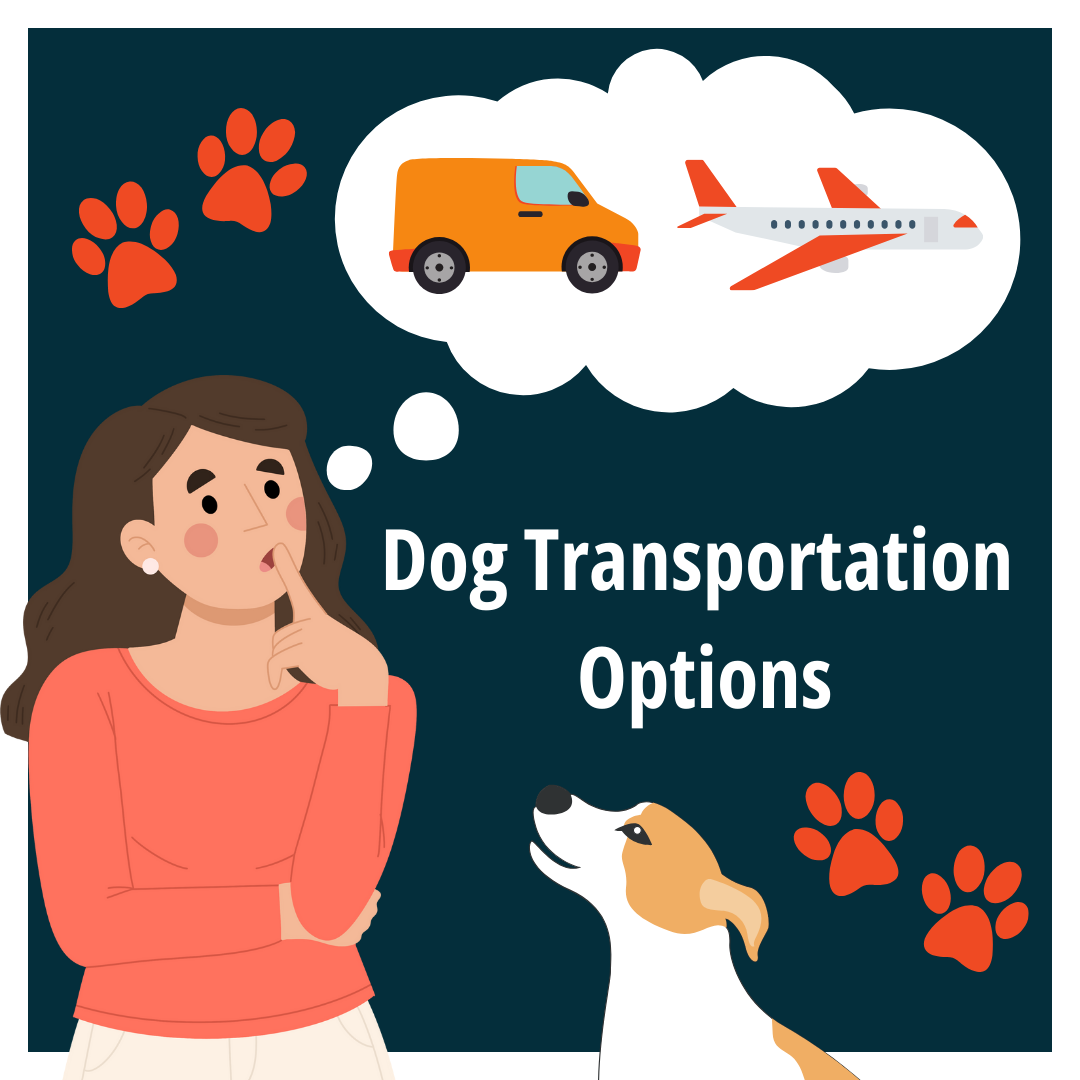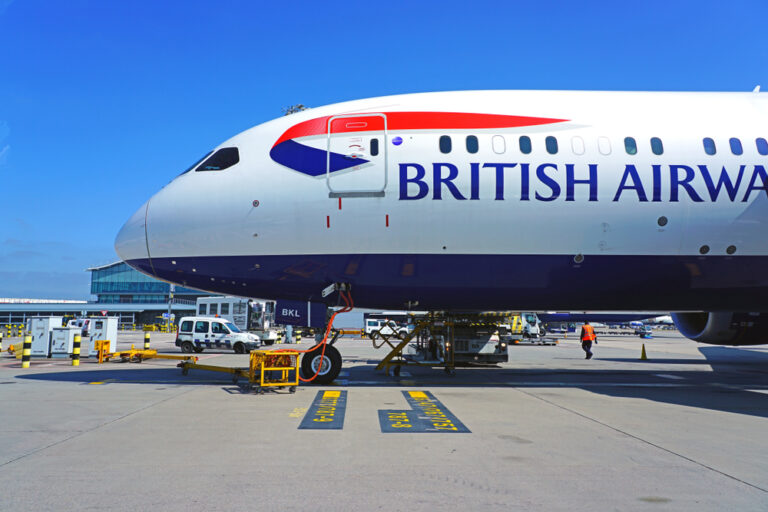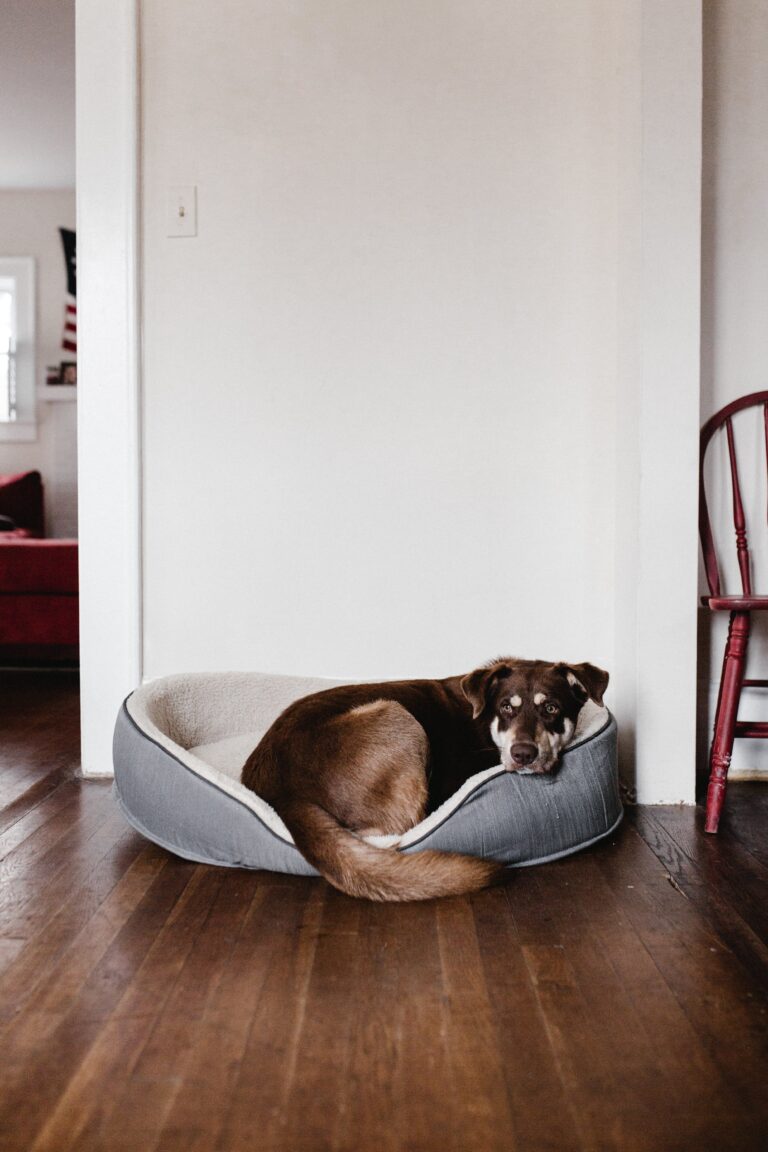Choosing the Best Way to Transport Your Dog
When it comes to shipping your dog, there are four primary methods: auto, ground shipping, airlines, and professional shipping services. Discover dog transportation options to ensure your pet travels comfortably and safely.
1. Auto:
Transporting your dog in your car offers the advantage of personal control and familiarity with the surroundings. Using a crash-rated travel crate is essential for safety. However, if your dog is not used to being in a crate, gradually acclimate your dog to the crate through short trips before the move. If your dog is still struggling with the crate, ask a dog trainer for some tips/training. Remember to plan breaks every 2-3 hours for exercise and provide regular access to water. If your trip will require an overnight stay, plan your route carefully to include dog-friendly hotels or motels. It’s also a good idea to keep your dog’s medical records available in case of emergencies.
2. Ground Shipping Companies:
Several pet ground shipping companies offer door-to-door services, with options like “Group Transport” (travel with other animals) or “Private Transport” (travel individually with no other animals). These can be cost-effective for shorter distances. When considering these services, inquire about stops, the number of animals traveling, climate control, exercise provisions, crate types, feeding schedules, and sleeping arrangements.
If you’re considering using a ground pet transportation service, ask the following questions to help evaluate your options:
How many stops with the vehicle make for other deliveries?
Unless you have specifically paid for the service, it’s unlikely the company will provide direct door-to-door service. A number of stops can add to travel time and could cause a high level of stress.
How many other animals will be travelling at the same time?
A variety of pets can be extremely stressful for your dog. You should avoid options where there are a number of pet types in a single transport.
Will your dog be travelling in a climate-controlled environment?
While all shipping companies are required to provide a climate-control shipping compartment, not all options are the same. Ask how the temperature is maintained and what type of ventilation is present.
What kind of exercise is provided?
If the trip is longer than 5 hours, your dog will need some type of exercise. Be sure to understand the details of how the exercise is provided. Find out if your dog is actually walked and allowed to run, or if he’s just let loose in a fenced area with other dogs, which may create an extremely stressful or potentially dangerous environment.
Ask about the type of crate used?
If the shipper provides the crates, be sure to inspect yourself ahead of time to be sure it’s large enough and properly ventilated. If your dog is not used to being crated, you may want to think twice about this option or spend time prior to the trip getting him used to being in a crate.
What is the feeding schedule?
Confirm when, how, and what your dog will be fed. If possible, try to ensure your dog receives his regular diet.
If the trip is overnight, ask about the sleeping arrangements?
Find out if the driver will sleep in the vans with the dogs in case special attention is required.
In most instances, especially for longer distances, shipping your dog by air is the safest and least stressful approach.
3. Air:
Air travel offers three options: cabin travel for small dogs, cargo travel for larger dogs, and unaccompanied cargo travel.
Your dog flies with you in the cabin of the plane
This option is limited to small size dogs transported in a carrier or crate that can fit under the seat in front of you. Most airlines restrict the number of dogs and cats in the passenger cabin to 2-3.
Your dog flies on your plane but in the cargo area
If your dog is too large to fly in the cabin, you can purchase a ticket and he can fly as cargo or as accompanied baggage. Dogs, and all animals, in the cargo system are transported in the same pressurized holds as those in the checked baggage system, which are pressurized and set for temperatures between 50 and 70 degrees.
Your dog flies unaccompanied by you in the cargo area
In this case, you’re sending your dog on the plane without you. Typically, the ticket price is higher if you are not flying on the same plane, and the cost will depend on the size and weight of the crate.
First, let’s address the safety issue. You may have read a few stories about dogs who have been found to be ill, injured, dead, or occasionally reported to be lost at the end of an airline trip. While each story is tragic, they represent only a tiny fraction of animal flying experiences.
Since May 2005, airlines have been required to report when there is a pet-related problem to the U.S. Department of Transportation. Given the fact that the airline industry estimates that the number of pets flying as baggage is more than 600,000 per year, the likelihood of major problems for your dog is really quite small. The chance of your pet dying, being injured, or reported lost when traveling as baggage, is approximately 0.009%. This is only a little bit higher than your chances of winning the jackpot in a state lottery.
If you’re considering working directly with the airlines, be aware that they will not usually ship certain breeds, typically those with short, squashy muzzles, such as pugs and bulldogs (brachycephalic). You will also need to provide a crate that adheres to IATA regulations, which requires the crate be sturdy, properly ventilated and large enough that your dog may freely stand, turn around, and lie down. Finally, be sure to make some type of contingency plans if the flight is delayed or re-routed due to weather.
4. Professional Dog Shipping Company:
Given the complexities of pet transportation, many opt for professional dog transport agencies, and certainly one that provides the greatest peace of mind. These agencies have expertise in airline policies, crate requirements, boarding, animal identification, and veterinary procedures. They prioritize the safety and well-being of your pet and ensure the safest and most stress-free travel experience possible. Most organizations are run by dog lovers who understand your companion is a member of your family and should be treated with special care.
For many, dogs are more than just pets—they’re cherished family members. According to a recent Harris poll, 90% of pet owners consider their dogs and cats integral parts of their families. So, when it comes to moving, ensuring a smooth transition for your furry friend is just as important as it is for the rest of your household.
In conclusion, whether you choose auto, ground, air, or professional shipping, prioritizing your dog’s comfort and safety is key to a successful and stress-free move. We hope these dog transportation options were able to help you stay informed or make an easier decision.
Contact Us
Contact one of our specialists or get an estimate to start your journey!
Visit us for more: www.airpetsinternational.com
Call us for more information: 866-738-7447
Email us: info@airpetsintl.com



